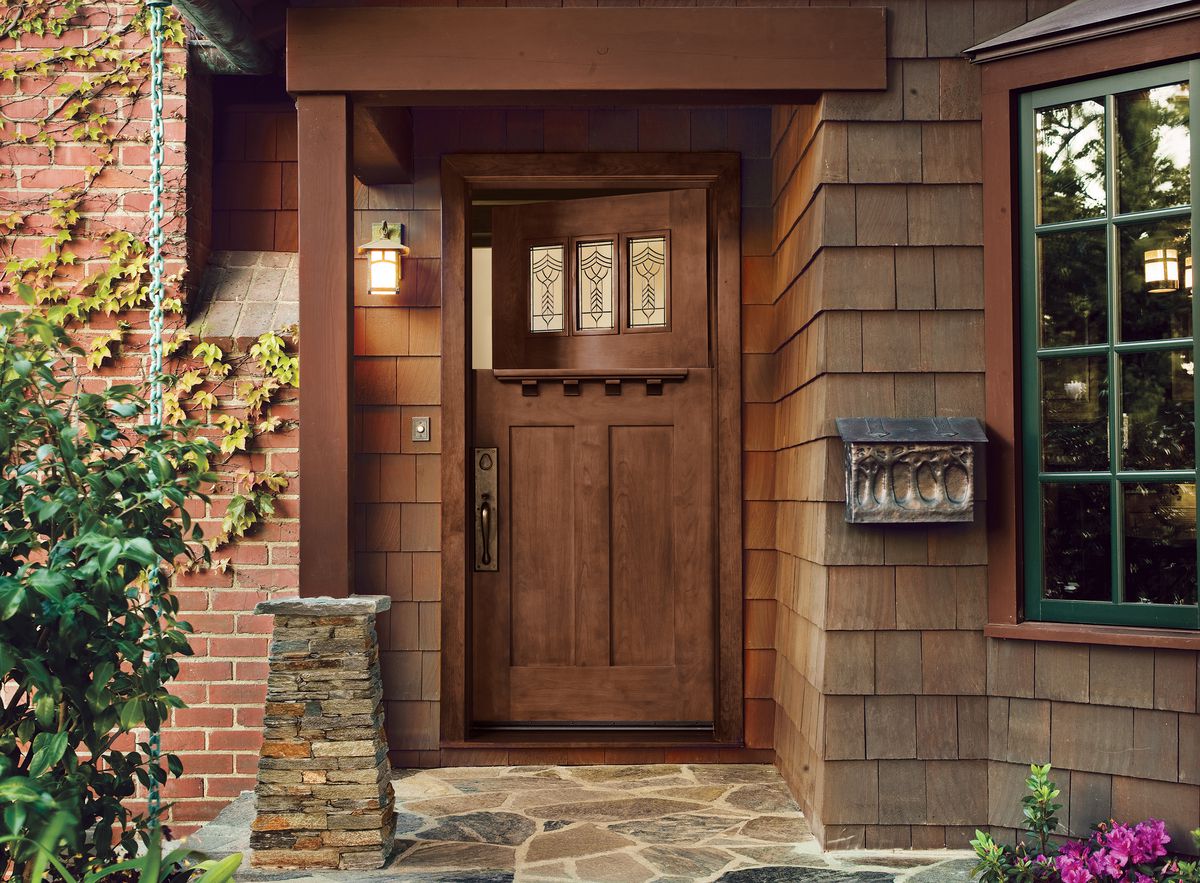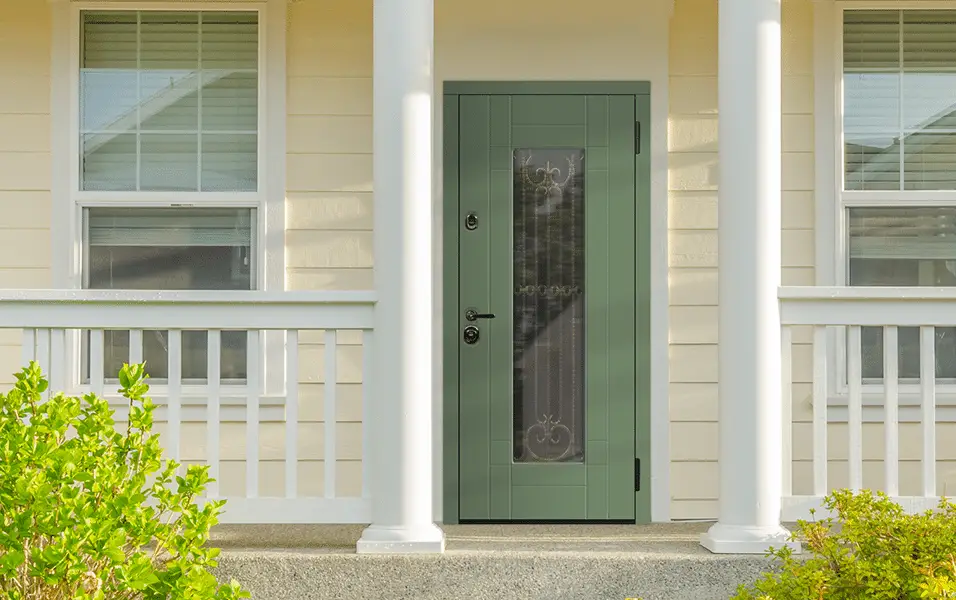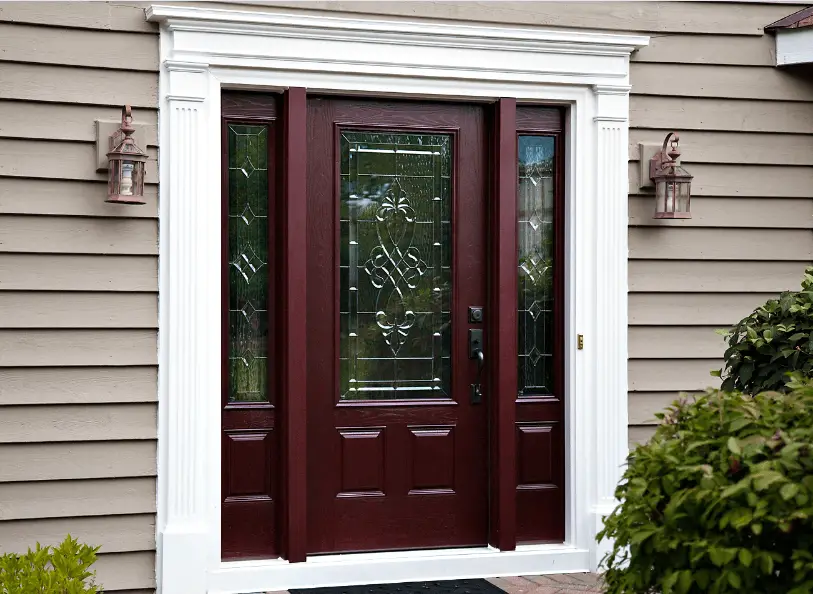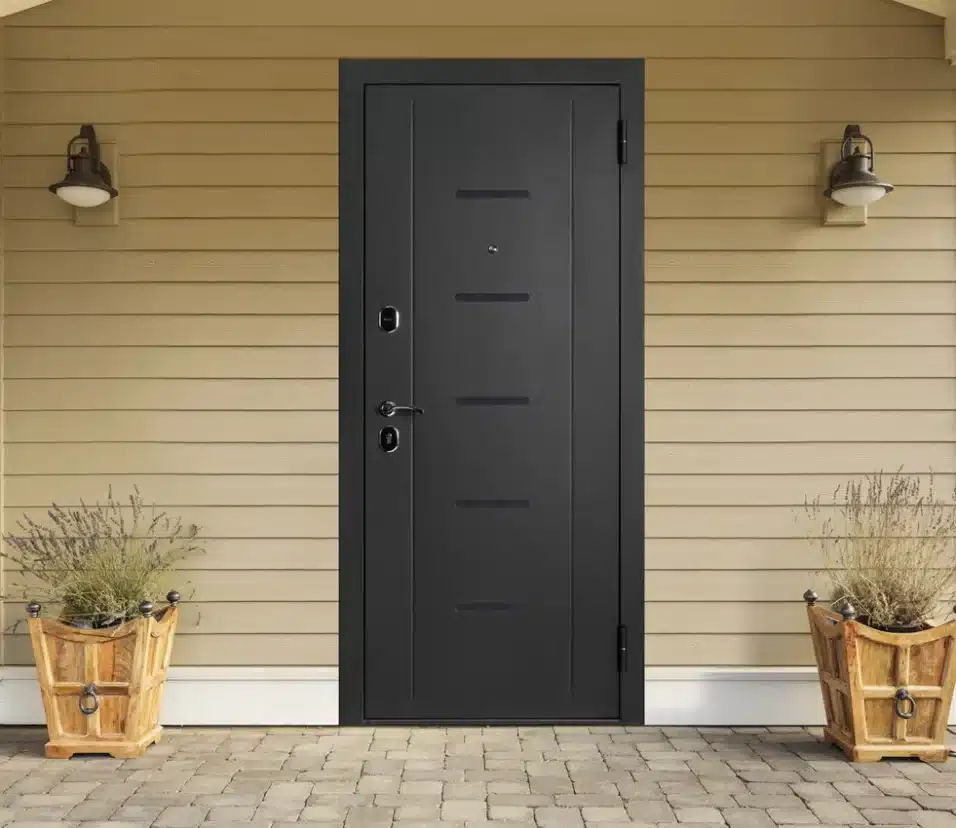How To Finish A Wood Exterior Door
Introduction
How To Finish A Wood Exterior Door: A well-finished wood exterior door can be a striking focal point of your home’s façade, exuding both beauty and durability. Whether you’re a seasoned DIY enthusiast or a novice looking to take on a rewarding home improvement project, knowing how to finish a wood exterior door is a valuable skill.
Finishing a wood exterior door not only enhances its aesthetics but also shields it from the harsh elements, ensuring it stands the test of time. In this comprehensive guide, we’ll walk you through the step-by-step process of achieving a professional-quality finish on your wood exterior door. From selecting the right materials and preparing the door’s surface to applying the finish and ensuring long-term maintenance, we’ve got you covered.
So, whether your door is new or in need of a refresh, this guide will empower you with the knowledge and techniques to complete the task with confidence. By the end, you’ll have a beautifully finished wood exterior door that not only adds curb appeal but also serves as a testament to your DIY prowess.

What is the best finish for outdoor wooden door?
Paint. Because its opaque pigments block the sun’s UV rays, an exterior-grade oil- or water-based paint is the longest-lasting and most-protective finish you can apply. Plus, it comes in eye-catching colors to improve your home’s curb appeal. Sand and reapply every five to six years.
Choosing the best finish for an outdoor wooden door is crucial for both aesthetics and protection against the elements. The top choices for finishing an outdoor wooden door include:
- Spar Varnish: Spar varnish is a popular choice due to its durability and ability to withstand exposure to sunlight and moisture. It forms a hard, protective coat that shields the wood from UV rays, rain, and temperature fluctuations.
- Marine Grade Polyurethane: This finish is designed for marine applications and offers exceptional waterproofing and UV resistance. It’s a fantastic option for doors in coastal or humid environments.
- Exterior Paint: Some homeowners prefer the opaque look of paint. High-quality exterior paint can provide excellent protection against the elements. Make sure to properly prepare the door’s surface and apply primer before painting.
- Penetrating Oil: For a more natural look, penetrating oils like tung oil or linseed oil can be used. These oils soak into the wood, highlighting its grain and providing moderate protection. However, they may require more frequent reapplication than varnishes or polyurethanes.
- Water-Based Finishes: Water-based finishes have become increasingly popular due to their low toxicity and ease of cleanup. They offer decent protection but may require more frequent reapplication compared to oil-based options.
The best finish ultimately depends on your aesthetic preferences, the door’s location, and your commitment to maintenance. Regular maintenance, including cleaning and refinishing as needed, is key to extending the life of any finish on an outdoor wooden door.
What is the best oil finish for exterior doors?
The best oil for wood doors varies depending on wood type, but the best brands will consist mainly of either Tung or linseed oil, or a combination of both. For optimal results, you can buy pure linseed oil: it takes a little longer to dry, but it’s best for the long-term health of wood exterior doors.
When it comes to oil finishes for exterior doors, you’ll want one that provides excellent protection against moisture and UV rays while enhancing the wood’s natural beauty. Two commonly used options are:
- Teak Oil: Teak oil is renowned for its water-repellent properties and UV resistance. It enhances the wood’s natural color and grain while providing a protective layer. It’s often used on hardwood doors.
- Danish Oil: Danish oil is a blend of oil and varnish that offers good protection for exterior doors. It enhances the wood’s appearance and is relatively easy to apply. However, like teak oil, it may require periodic reapplication.
It’s essential to follow the manufacturer’s instructions for the specific oil finish you choose, as application methods and drying times can vary. Additionally, regular maintenance and reapplication of the oil finish are necessary to keep the door protected and looking its best.
What do you put on an exterior wood door?
Many homeowners opt for a polyurethane finish because it’s waterproof. You may also want to choose an exterior paint with UV protection to prevent future fading. Lighter stains and paint colors tend to last the longest, but either way, you should always apply paint per the manufacturer’s instructions for best results.
To properly protect and maintain an exterior wood door, you should follow a series of steps:
- Choose the Right Finish: As discussed earlier, select the appropriate finish for your door based on your location and aesthetic preferences.
- Prepare the Surface: Ensure the door’s surface is clean, dry, and free of any old finish or debris. Sanding may be necessary to create a smooth surface for the new finish to adhere to.
- Apply Primer (if painting): If you’re planning to paint the door, apply a high-quality exterior primer first. This helps the paint adhere better and provides additional protection.
- Apply the Finish: Follow the manufacturer’s instructions for applying your chosen finish. Use a brush, roller, or sprayer, depending on the finish type. Ensure even coverage and follow recommended drying times between coats.
- Regular Maintenance: Over time, your exterior wood door will be exposed to the elements. Regularly inspect the door for any signs of wear or damage to the finish. Touch up or reapply the finish as needed to maintain its protective qualities and appearance.
- Hardware Maintenance: Don’t forget to maintain the door’s hardware, including hinges, knobs, and locks. Lubricate moving parts to prevent rust and ensure smooth operation.
By following these steps and conducting regular maintenance, you can keep your exterior wood door looking beautiful and functioning effectively for years to come.
What kind of finish for exterior door?
Go with a semi-gloss finish
Semi-gloss paint offers enhanced durability against wear-and-tear and harsh weather compared to flat or eggshell finishes, and it masks surface imperfections better than high-gloss. The glossiness also makes the door easier to clean as compared to flat or eggshell finishes.
The choice of finish for an exterior door depends on several factors, including the door’s location, the type of wood, and your aesthetic preferences. Here are some common options:
- Spar Varnish: Spar varnish is an excellent choice for exterior doors because of its exceptional durability and resistance to moisture and UV rays. It provides a glossy, protective finish that enhances the wood’s appearance.
- Marine Grade Polyurethane: This finish is similar to spar varnish but designed for even harsher outdoor conditions. It offers superb protection against water and UV damage and is ideal for doors in coastal areas.
- Exterior Paint: If you prefer a solid color or need extensive protection, exterior paint is a good choice. Make sure to use high-quality paint and apply primer before painting for the best results.
- Penetrating Oil: Penetrating oils like tung oil or linseed oil offer a natural, matte finish that highlights the wood’s grain. While they provide some protection, they may require more frequent reapplication.
- Water-Based Finish: Water-based finishes are an eco-friendly option with decent protection against the elements. They come in various sheens, from matte to glossy, to suit your preference.
Ultimately, the best finish for your exterior door depends on your specific needs and the look you want to achieve. Regardless of the finish you choose, regular maintenance is essential to keep your door looking its best and protected from the outdoor elements.
How do you waterproof a wooden door?
There are three surefire ways to waterproof your wood for years to come.
- Use linseed or Tung oil to create a beautiful and protective hand-rubbed finish.
- Seal the wood with a coating of polyurethane, varnish, or lacquer.
- Finish and waterproof wood simultaneously with a stain-sealant combo.
Waterproofing a wooden door is essential to protect it from moisture, which can lead to warping, rot, and other forms of damage.
Here’s how to waterproof a wooden door:
- Clean and Prepare the Surface: Start by cleaning the door’s surface thoroughly. Remove any dirt, dust, or old finish using a mild detergent and a scrubbing brush or sandpaper. Allow the door to dry completely.
- Choose the Waterproofing Product: There are several waterproofing products available, including wood sealers, varnishes, and oils. The choice depends on your preferences and the door’s location.
- Apply the Waterproofing Product:
- Wood Sealers: Wood sealers like polyurethane or spar varnish provide a protective film over the wood. Apply multiple thin coats, following the manufacturer’s instructions, and sand between coats for a smooth finish.
- Penetrating Oils: Oils like linseed or tung oil penetrate the wood, nourishing it and providing some waterproofing. Apply several coats, allowing each to dry before adding another.
- Waterproofing Stain: Waterproofing stains combine color and protection. They are applied similarly to regular stains but offer better water resistance.
- Seal Edges and Joints: Pay special attention to the edges and joints of the door, as these are vulnerable to water penetration. Ensure that all gaps and seams are properly sealed with the chosen product.
- Regular Maintenance: To maintain the waterproofing, periodically inspect the door for signs of wear and tear. Reapply the waterproofing product as needed, which may be every few years depending on the product and your climate.
Should I oil or varnish wood door?
It really is personal preference on whether you choose the oil or the varnish. The main difference is that the oil penetrates the wood veneer protecting it from the inside and leaving a thin wax layer on top, whereas the varnish creates a protective coating on top.
Choosing between oil and varnish for a wood door depends on your desired finish, maintenance preferences, and the level of protection required:
- Oil Finish: Oiling a wood door enhances its natural beauty, highlighting the grain and providing a matte or satin finish. It’s a good choice if you want a more rustic or natural look. However, oil finishes require more frequent reapplication compared to varnishes, as they offer moderate protection against moisture and UV rays.
- Varnish Finish: Varnish, particularly polyurethane or spar varnish, forms a protective layer over the wood, offering excellent resistance to moisture and UV damage. It provides a glossy finish that can make the door appear more polished and formal. Varnished doors typically require less frequent maintenance, making them a suitable choice for exterior doors exposed to the elements.
Ultimately, your decision should be based on your aesthetic preferences and the level of maintenance you’re willing to commit to. If you value a natural look and don’t mind more frequent upkeep, oil may be your preference. If you want maximum protection with less maintenance, varnish is the way to go.
What is the best varnish for doors?
There are three brands best known for their door oils – Treatex, Impranol and Osmo. All of these oils are preferred finishing solutions for internal doors. Most are a mix of oil an wax, which means that it will soak into the wood surface and therefore provide a hard wearing wax layer.
Selecting the best varnish for doors involves considering factors such as durability, UV resistance, and appearance. Here are some of the top choices for varnishes:
- Spar Varnish: Spar varnish is a popular choice for exterior doors because of its exceptional durability and ability to withstand exposure to sunlight and moisture. It forms a hard, protective coat that shields the wood and maintains its glossy finish over time.
- Marine Grade Varnish: Similar to spar varnish, marine-grade varnish is designed for even harsher outdoor conditions. It offers superior protection against water and UV damage, making it an ideal choice for doors in coastal or humid environments.
- Polyurethane Varnish: Polyurethane varnish is known for its toughness and resistance to wear and tear. It comes in both oil-based and water-based varieties, allowing you to choose based on your preferences and environmental concerns. It provides a glossy, protective finish.
- Water-Based Varnish: Water-based varnishes are a more environmentally friendly option compared to oil-based varnishes. They offer good protection, dry quickly, and have a lower odor. They come in various sheens, from matte to high gloss, to suit your desired finish.
When choosing a varnish for your door, consider the door’s location, your climate, and your aesthetic preferences. Regardless of the varnish you choose, follow the manufacturer’s instructions for proper application to achieve the best results and longevity.
What is exterior wood finish?
Types of Exterior Finishes
Film-forming stains, including primers, deck paints, and heavily pigmented stains, protect the wood by creating a film on top of the surface. These often have higher UV protection an may last longer, though maintenance needs are higher than penetrative stains.
An exterior wood finish is a protective coating applied to wooden surfaces exposed to outdoor elements. Its primary purpose is to safeguard the wood from moisture, UV rays, temperature fluctuations, and other environmental factors that can cause damage such as warping, rotting, or fading. Exterior wood finishes also enhance the wood’s appearance and can be chosen to achieve different looks, from a natural, matte finish to a glossy, polished appearance.
Common types of exterior wood finishes include:
- Varnish: Varnish, such as spar varnish or polyurethane varnish, forms a hard, glossy film over the wood, providing excellent protection against moisture and UV damage. It’s often used on doors, decks, and outdoor furniture.
- Oil Finishes: Penetrating oils like tung oil or linseed oil seep into the wood, highlighting its natural grain and providing moderate protection against the elements. They are suitable for those who prefer a more natural appearance.
- Stains: Exterior wood stains add color to the wood while providing some protection. They are available in transparent, semi-transparent, and solid forms, allowing you to control the level of wood grain visibility.
- Water-Based Finishes: These environmentally friendly finishes come in various sheens and offer decent protection for outdoor wood surfaces. They are often used on fences, siding, and wooden playsets.
- Waterproofing Sealers: These clear or tinted sealers create a protective barrier on the wood’s surface, preventing water infiltration. They are commonly used on decks and outdoor wooden structures.
The choice of an exterior wood finish depends on your specific needs, the type of wood, and the desired aesthetic. Regular maintenance and reapplication are typically required to ensure long-lasting protection and appearance for exterior wood surfaces.

Conclusion
In concluding our guide on how to finish a wood exterior door, you’ve embarked on a journey to transform a functional element of your home into a stunning masterpiece. By following the steps outlined here, you’ve learned the art of selecting the right materials, preparing the surface, applying the finish, and maintaining your door’s beauty and functionality for years to come.
Remember, the satisfaction of a well-executed exterior door finish goes beyond aesthetics. It’s an investment in your home’s longevity and an expression of your craftsmanship. As you stand back and admire your completed project, you can take pride in knowing that you’ve not only enhanced your home’s curb appeal but also acquired a valuable skill in the realm of DIY home improvement.
With your newfound knowledge and the entry door’s enhanced protection against the elements, you can enjoy the beauty of your wood exterior door for years, making a lasting impression on all who pass through it. Thank you for choosing this guide as your companion in transforming your wood exterior door into a work of art.








